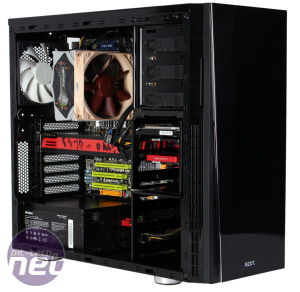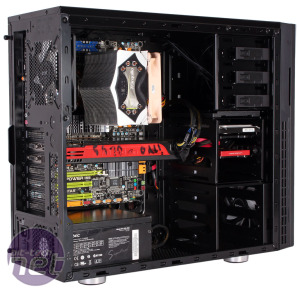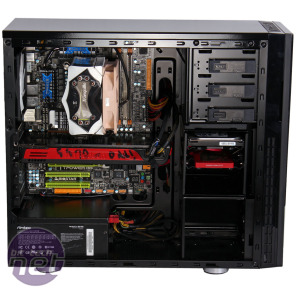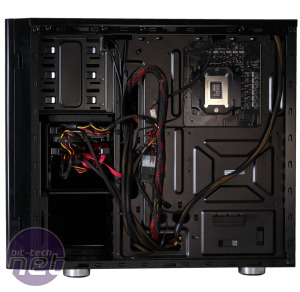Performance Analysis
The soft noise dampening foam turned out to be better than we thought, and the H230 does a nice job of staying quiet and concealing sound. That said, it's still not close to the levels of quietness achieved by the likes of Fractal Design's Define R4 or Nanoxia's Deep Silence cases. These chassis feature significantly heftier materials throughout as well as quieter and more efficient fans, which are also speed adjustable with onboard controllers.Possibly as a consequence of the quieter running, the H230's cooling results are fairly lacklustre, but the news isn't all bad. Both its CPU and GPU delta T results (58°C and 53°C respectively) are beaten by 1°C by the Cooltek Antiphon at max speed, which is very loud compared to this. Corsair's Carbide 330R, however, improves upon its results somewhat more, while also managing to stay nice and quiet as well. With the H230, therefore, you'll have to make sacrifices in the cooling department (as you inevitably do with silence orientated products), but you should be fine if you're not pushing your hardware too hard.
Conclusion
The NZXT H230 is a fine chassis in many regards, and as with the similarly priced Antiphon we're impressed most notably by the sheer quality of its construction (perhaps with the exception of the drive trays). Its fans also strike a better balance between cooling and noise than Cooltek's, so it's a solid choice if you want a a cheap, silence oriented chassis and aren't planning on any heavy overclocks or water-cooling.It should be pointed out, however, that a relatively small additional investment of around £20 would put you in the realms of Fractal's Define R4, for example, which is a superior silence-oriented chassis. If your budget can't stretch, then the Midgard II offers even more bang for your buck than the H230, with its fan control knob also allowing you to choose between low noise and high performance.
-
Cooling13 / 30
-
Features15 / 20
-
Design26 / 30
-
Value19 / 20


MSI MPG Velox 100R Chassis Review
October 14 2021 | 15:04













Want to comment? Please log in.